Financial Headwinds
Are we banking on uncertainty?
In this report, we share the results of our conversations with leading banks, alternative lenders and borrowers.
The banking industry has been a pillar of the British and world economies for centuries, with London frequently described as the financial capital of the world. As businesses and individuals throughout the UK adapt to the realities of a cost-of-living crisis, interest rates at a level not seen for a generation and a spate of macroeconomic issues, we explore the impact this confluence of circumstances is having on the lending landscape in the country. As with most areas of life, this economic backdrop is shaping lending appetite and trends, which was compounded by the spate of bank collapses in early 2023 recalling financial crises of years gone by in the minds of many. The stability that has followed continues to provide reassurance and, while caution may be the order of the day, lending continues.
In this report, we share the results of our conversations with banks, alternative lenders and borrowers to understand the types of funding available to customers, which lenders are flourishing in the current climate and the extent to which clients are considering debt alternatives.
Given the powerful links between finance and property, the downturn in the real estate market and predictions over the fall in property prices have wide-ranging implications for the banking industry. Our contributors share their views on the ongoing property price correction, prospects for the development of infrastructure and what lending options borrowers are choosing in the current market.
Banks continue to adapt to cumulative levels of regulation, prepare for potential spikes in defaults and insolvencies and respond to challenges from disruptors. As these new entrants gain traction in the market, we look at what the next challenges will be for the industry.
We would like to thank those who have contributed to this report and welcome you to join the discussion via the activities we have planned over the coming months.
Our panel of expert contributors
Ben Barbanel of Oak North | Leo del Rosso of Commercial Acceptances | Ravi & Sukhi Gidar of Gold Care Homes | Adam Bovingdon of United Trust Bank | Sudhir Sharma of State Bank of India





Banking industry continues to navigate macroeconomic challenges
Watch the video to discover our expert contributors' assessments of the macroeconomic challenges.
The banking industry, not to mention the wider world, has faced an extraordinarily challenging landscape in recent times.
As people continue to navigate the cost-of-living crisis, persistently high inflation and interest rates, lenders and businesses alike are taking a careful approach to lending and borrowing.
The International Monetary Fund (IMF) projects economic growth of 0.6% in the UK in 2024, the lowest predicted growth of all the G7 economies and down from its prediction of 1% growth last July. As far as inflation is concerned, the IMF does not expect this to return to target levels until 2025 in most countries, with a forecast decline to 5.8% globally in 2024. And as the Bank of England held interest rates at a 15-year high of 5.25% at the beginning of November, its governor, Andrew Bailey, warned that rate cuts were not likely to come soon and further rate increases may yet follow.
Accordingly, caution, perhaps an inevitable attribute at this stage of the financial cycle, prevails. Ben Barbanel, head of debt finance at OakNorth Bank, predicts that while “interest rates have clearly gone up significantly, we’ve not yet seen the real bite from that”. Providing the borrower’s perspective, Ravi Gidar, chairman of Gold Care Homes, foresees loan interest rates reaching around 10%, suggesting that “valuations will have to come down” in order for businesses to meet the criteria.
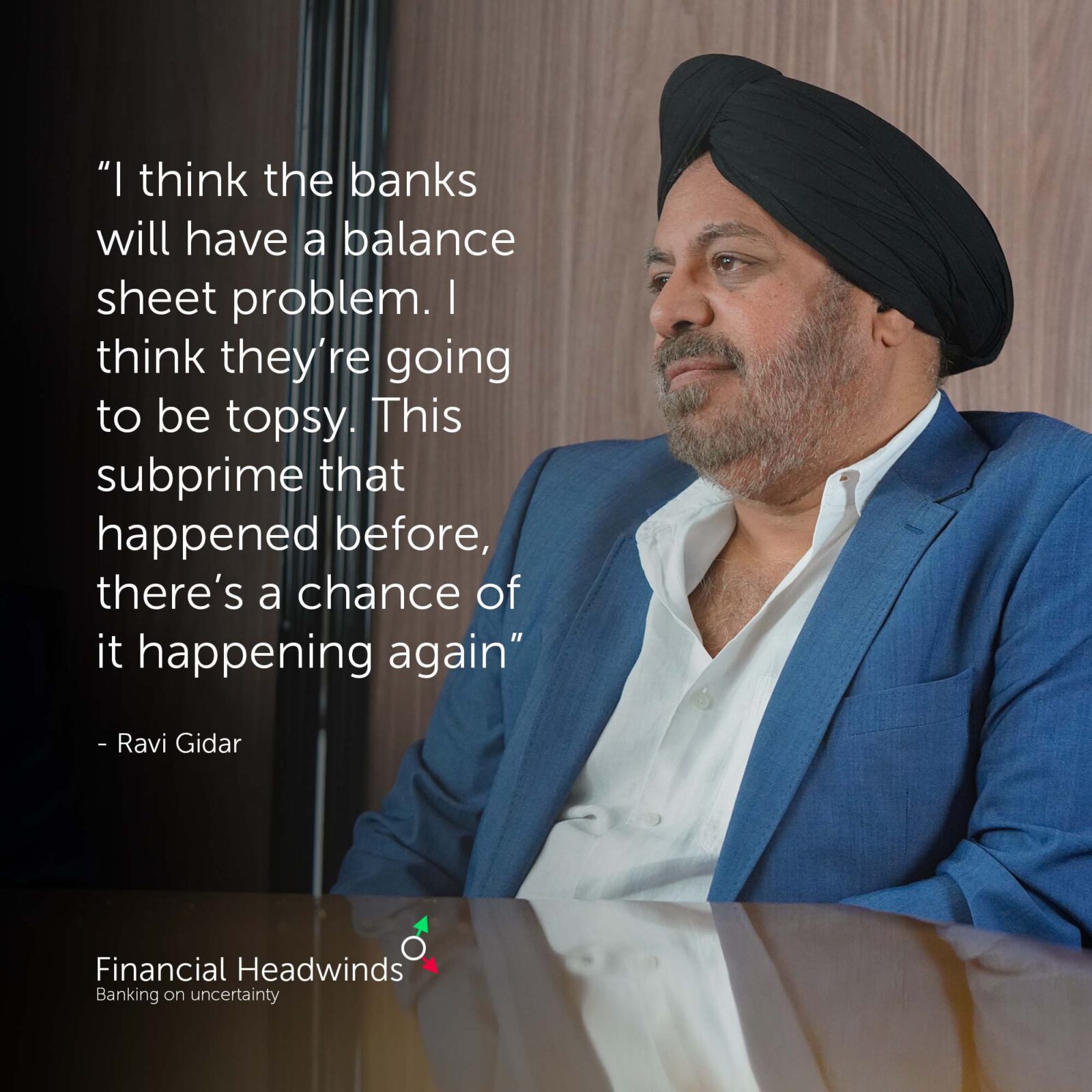
The uncertainty around interest rates, access to capital and lending levels in general, of course, has to be seen within the wider context of the lengthy run of macroeconomic shocks the UK and wider world have seen in recent years. As we noted in our 2022 Transactional Tension report, “the perceived repercussions for collaboration caused by Brexit, the devastating effects of the pandemic and the ongoing geopolitical uncertainty caused by military conflict, have had a compounding and unprecedented effect”, which continues to reverberate through the markets to this day.
Then the shock of the series of bank collapses in spring 2023, precipitated by the overnight collapse of US lender, Silicon Valley Bank (SVB), risked doing major damage to the banking system and the global economy, as well as the start-up sector. Undoubtedly some fear still remains that “the banks will have a balance sheet problem”, as Ravi Gidar suggested, and with 89% of SVB’s $175 billion in deposits uninsured according to data submitted to the Federal Deposit Insurance Corporation (FDIC) at the end of 2022, lenders and borrowers received a wake-up call with regard to the security of deposits. The prompt and effective action on the part of regulators and central banks shored up confidence in the system and staved off a potentially wider crisis and the lenders have been hard at work to steady the ship for the long term. Ben Barbanel spoke of “building a non-runnable bank”, i.e., a bank that is not vulnerable to a large number of customers withdrawing their deposits at the same time due to fears around the bank’s solvency.
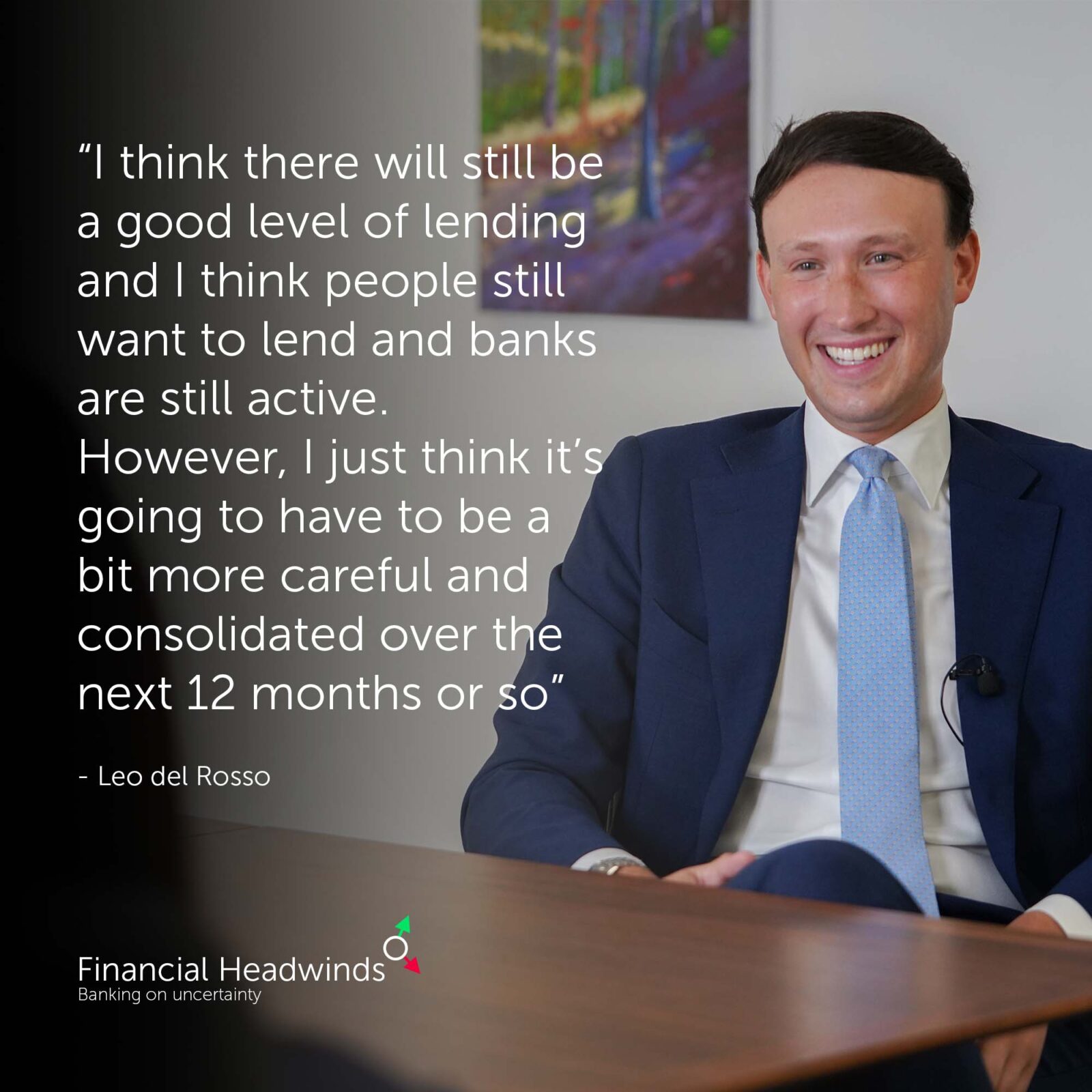
Another variable that is likely to have a significant effect on the lending climate is the anticipated general election in 2024, as well as the upcoming US elections, which are also likely to reverberate across the global economy whatever the outcome. A growing expectation of state investment in infrastructure following an election has the potential to lead to increased lending appetite. Certainly, as far as housebuilders and developers are concerned, Adam Bovingdon, head of property development at United Trust Bank (UTB), flagged that “they need to see some improvements, more investment in the planning system and a clearer policy or clearer guidelines around green initiatives”. These could include relaxing planning for renewable energy, improving the speed of grid connection agreements, increasing the auction price for government renewable contracts to factor in the increased costs of renewable energy projects, or introducing a new green deal to support property retrofitting requirements.
The impact of these factors varies depending on the type of loan, but the cost of borrowing is acting as a deterrent to borrowers. However, Leo del Rosso, lending manager at Commercial Acceptances, has seen the banks remaining active and is optimistic for “a good level of lending” moving forward. While not all lenders are currently lending, all the lenders we spoke to for this report continue to do so.
Furthermore, in spite of this convergence of macroeconomic headwinds and turbulence in the global financial market, Sudhir Sharma, UK and EU regional head at State Bank of India, remains confident that the “UK market is financially stable” and that there is reason for optimism in the form of “a lot of investment flowing in and lots of new ventures”.
Real estate market – predictions and lending trends
Watch the video to find out what the experts think are going to be the next big lending trends.
The banking industry is inextricably intertwined with the real estate market, which is seeing a great deal of wariness.
Caution across the real estate market is owing to a range of issues such as a decline in demand for commercial property in the context of the rise of flexible work and challenges around housebuilding targets. The lenders we spoke to said they have been working hand-in-hand with borrowers to navigate these challenges, supporting them for the duration of real estate projects.
The uncertainty that remains with regard to supply and building targets is likely to continue to act as a stabilising influence on any real estate market price correction in the next 12 months, both for commercial and residential properties. As we reported in 2022, the construction industry “is not without its own challenges: an ageing workforce (35% of the workforce are over 50), poor image, lack of diversity, Brexit uncertainty, supply chain issues, access to foreign labour and a planning system that has reached its lowest point”. The political and economic challenges faced by developers have only grown since then, when you take into consideration inflation, interest rates and the wider economic slowdown with Adam Bovingdon, head of property development at UTB, echoing that the “planning landscape is also particularly challenging at the minute”.
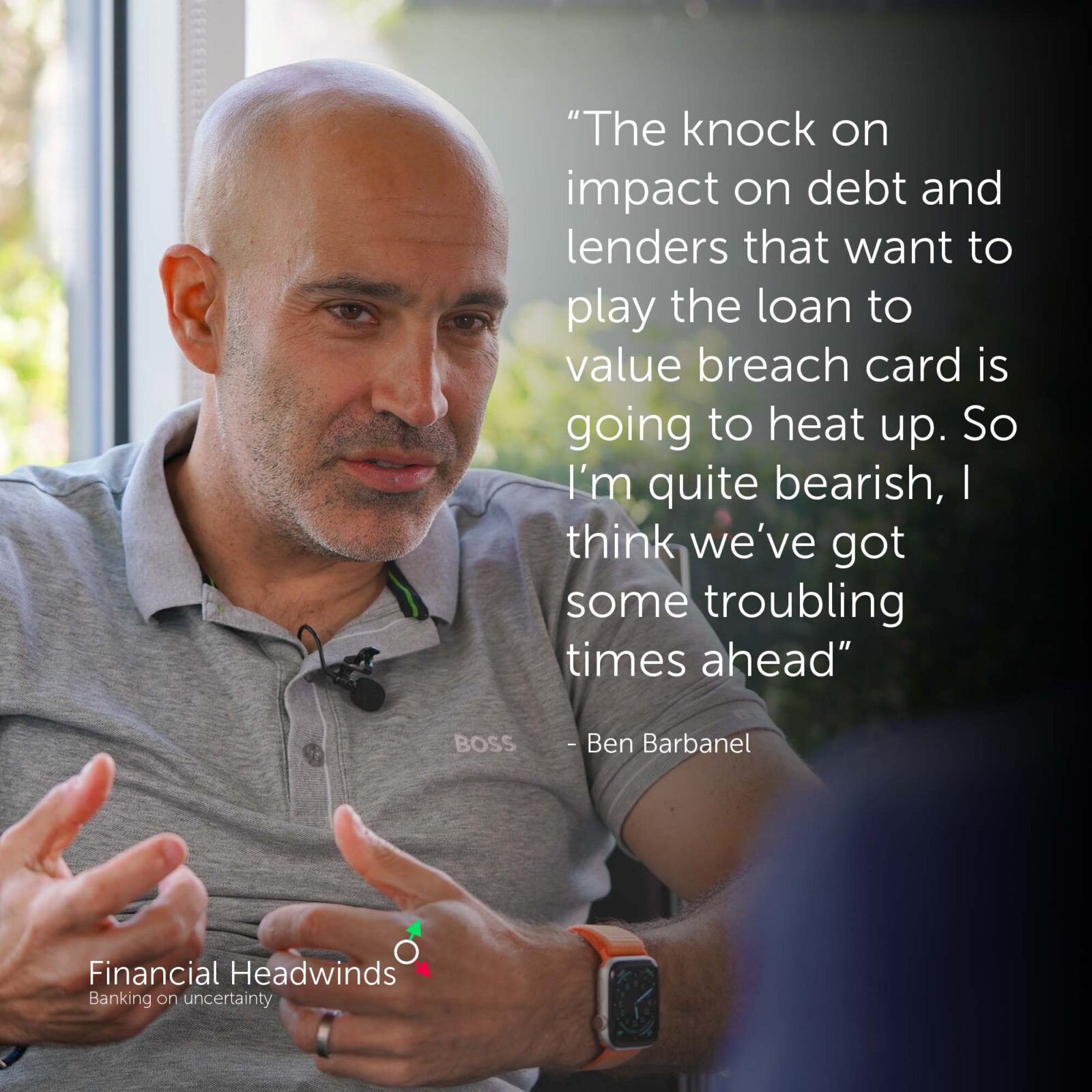
Meanwhile, the dramatic rise in rental prices, as well as energy prices, has had a significant effect on the buy-to-let market causing many landlords to consider selling up and posing challenges for investor portfolios. Some of the additional factors compounding the issues and causing private landlords to sell up include “retirement ages, high interest rates and an increase in the amount of red tape”, according to Adam Bovingdon.
Leo del Rosso, lending manager at Commercial Acceptances, notes that “rental property is very important and will continue to be a big part of investors’ portfolios”, meaning that the challenges faced in this area are leading to a “slowdown in people buying the opportunities”, which in turn feeds into the wider price correction.
Taking all these matters into consideration, an ongoing price correction over at least the next 12 months continues to be likely. Estate agency Knight Frank predicts an overall drop in house prices of 7% in 2023 and a further 4% drop in 2024. Ben Barbanel, head of debt finance at OakNorth Bank, feels “we’re in for some tough times in terms of capital values”, with Leo del Rosso agreeing that a slowdown is likely with a caveat that “fundamentally there is still a lot of liquidity in the market”.
The rules and regulations put in place following the subprime mortgage crisis of 2007-2010, including the stress testing of mortgages, and the levels of capitalisation in banks, are factors cited by Leo del Rosso that put us “in a better position this time”, when you consider that “we’ve had quite a significant shock to the market with interest rates rising significantly in a short amount of time. Actually, relative to that, the market has held up pretty well”.
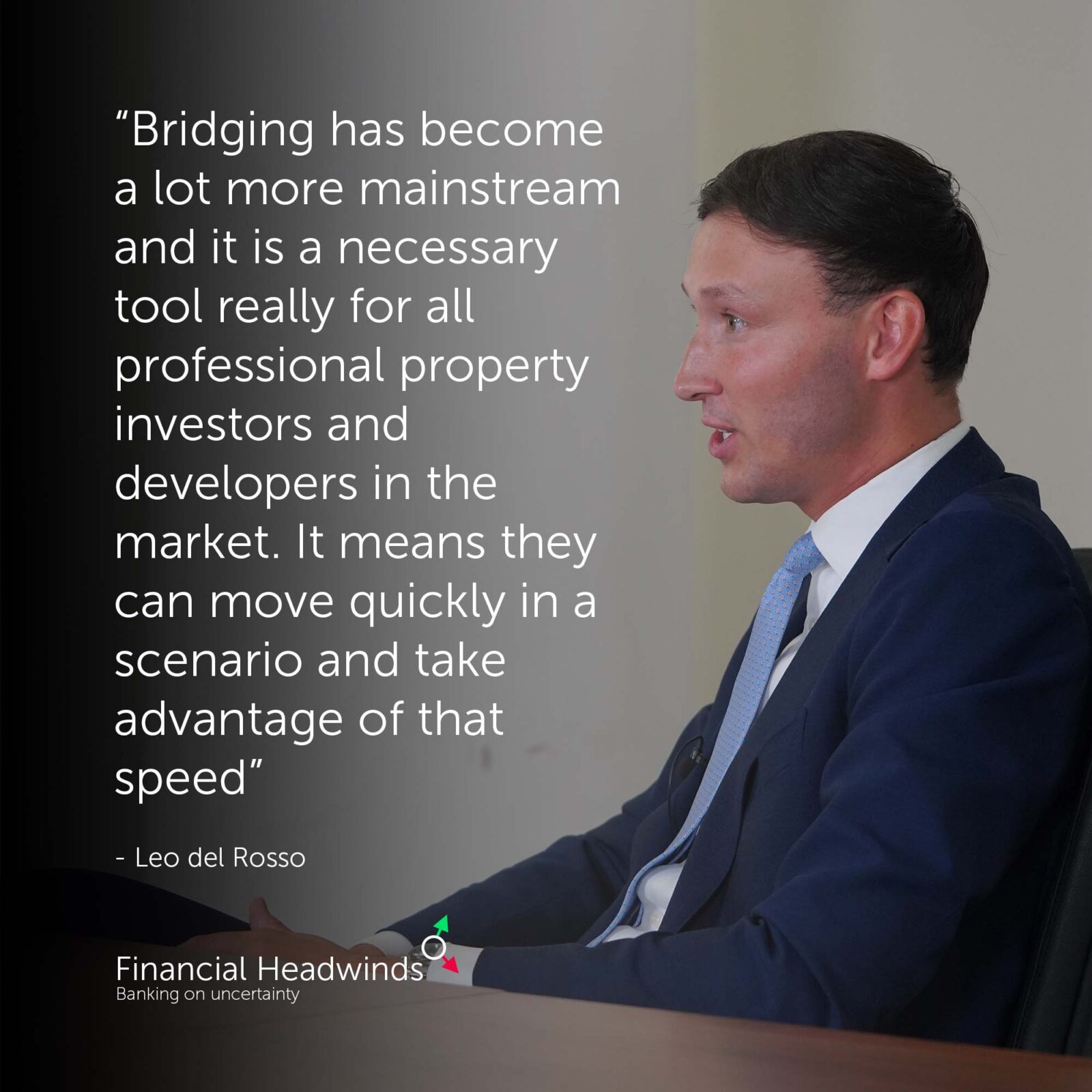
Adam Bovingdon expects there to be a lot of variability depending on the region and the property type involved. He explained that UTB “lend across England and Wales and parts of the country have undoubtedly seen a fall so far of up to about five percent on some property types” while others are still showing “incredibly strong demand with prices still beginning to ease up”.
So what are our contributors’ predictions for the real estate market in 2024? We heard a range of views:
- Leo del Rosso: “I think overall the market is a bit better prepared and banks are bit better prepared this time around”.
- Adam Bovingdon: “We are concerned but actually, we don’t think it will be any more than low double-digit figures. We’re perhaps give or take halfway through that cycle”.
- Ben Barbanel: “I’m quite bearish. I think we’ve got some troubling times ahead”.
- Priya Pandya, real estate partner at RWK Goodman: “With the autumn budget statement bringing little change to a stagnant real estate market, businesses will be looking to the forthcoming general election for news of policies and investments that could invigorate the industry”.
And what does this mean for lending in the real estate market? Ben Barbanel queries why “cap rates haven’t widened significantly given the risk-free rate”, i.e., comparing the interest earned on money in the bank two years ago versus now. The capitalisation rate, which is calculated by dividing net operating income by property asset value, can serve as a helpful indicator of the relative value of and potential returns on different investments in the market. He also predicts that loan to value ratios will go down for new deals and “there will be banks that are looking to exit positions, where they’ll be looking to call breaches under existing documentation”.
One area of funding where some expect to see growth in 2024 is bridge lending. This type of finance, which is used to provide short-term funding solutions to businesses and individuals, has been steadily increasing and “has become a lot more mainstream since 2008”, according to Leo del Rosso. He explains that “there’s been an explosion of new lenders, new entrants into the market and it is a necessary tool now really for all professional property investors and developers”.
The credit climate is complex, but banks remain open for business
Our expert contributors outline how the credit climate is creating highly complex conditions for banks.
Corporate lending has been fairly stable thus far, but it is likely to remain subdued as we move into 2024.
The convergence of ongoing macroeconomic challenges, an increasingly muscular regulatory environment and a recognition of the need to ensure adequate capitalisation means that banks will remain restrained in their lending approach.
Access to capital is tight in the current market and banks are having to work hard to identify feasible revenue models. The debt market was already beginning to slow in 2022 “as accessing capital [became] more problematic and subject to greater scrutiny”. The cost of borrowing continues to act as a deterrent, and it seems likely that lending criteria will remain tight over the course of 2024. Claire Wheatley, banking partner at RWK Goodman, notes that “some banks are finding high yield bonds more lucrative in the present market than lending and have shifted focus accordingly”.
Every financial cycle is affected by different factors and, while some may be tempted to evoke memories of the subprime crisis of 2007-08, Ben Barbanel, head of debt finance at OakNorth Bank, recognises that “the circumstances are different this time and in every cycle you have different things at play”. Indeed, as Sukhi Gidar, director at Gold Care Homes, elucidates, “the whole banking system has changed since the 2008 credit crunch. The way lending is perceived has changed and there’s a huge amount of pressure on the banks to ensure that bad debt doesn’t develop”.
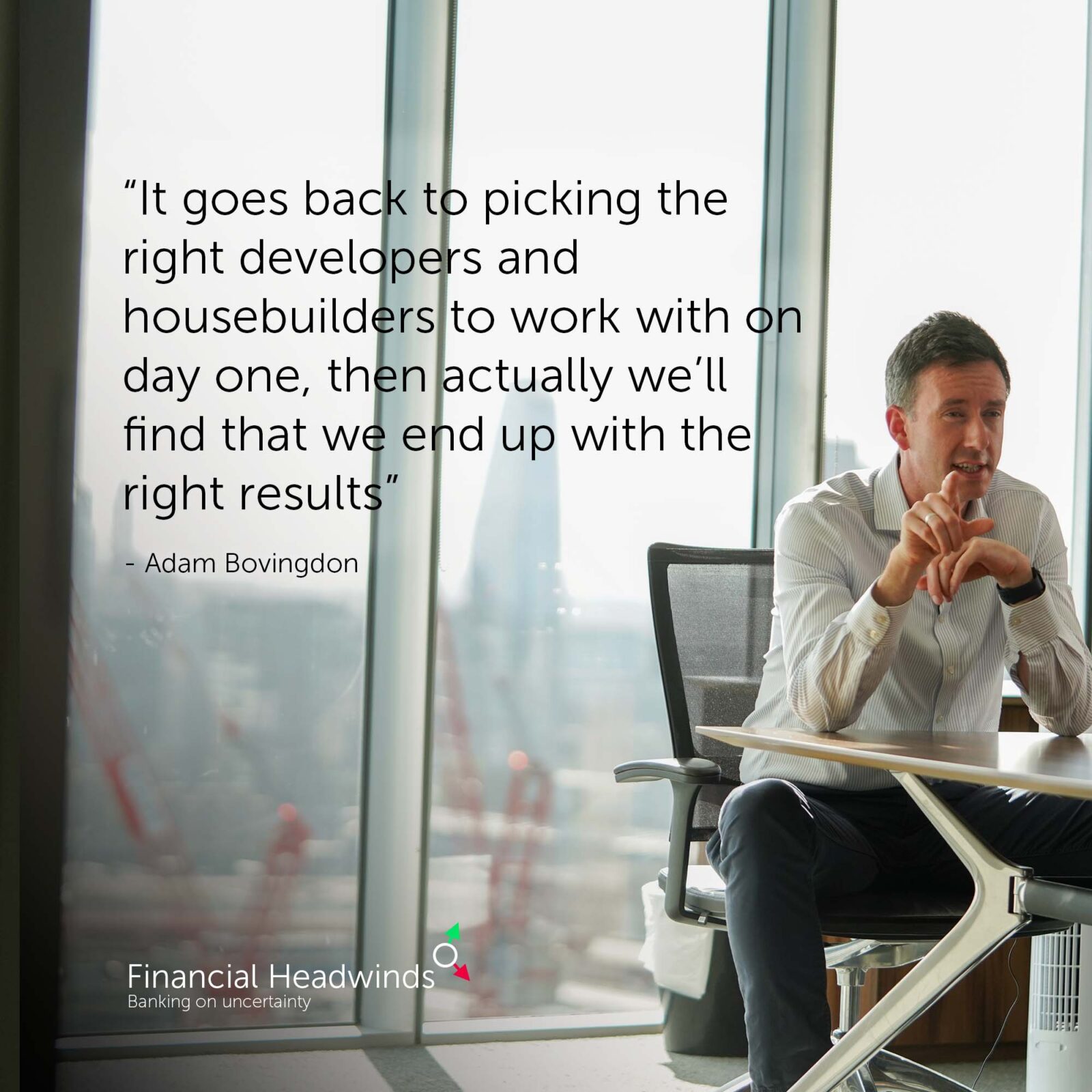
In addition to the expectations placed on banks within the wider context of the financial cycles, they must also traverse the ever-mounting regulatory hurdles as regulators work to protect lenders and borrowers alike and avoid future financial crises.
Basel III, a framework setting international standards with regard to banks’ liquidity, capital requirements and stress testing established in the aftermath of the 2007-2008 financial crisis, continues to make waves throughout the banking industry as the EU and the US roll out their respective “endgames”. Ben Barbanel recognises that “it’s technical, hard, costly and not finalised”, explaining that “we need to work through how it will impact us in terms of cost and how we’ll have to approach deals with clients”. The collapse of various US banks and Credit Suisse in early 2023 though, reminded banks of the importance of these capital requirements and liquidity remains front of mind for the banks as well as the regulators.
Back at the start of 2023, the Bank of England wrote to all banks active in the UK emphasising the need to reflect on their frameworks and protocols for risk management, governance and control. This includes undertaking “a comprehensive review of onboarding and due diligence practices, as well as counterparty pricing and margining frameworks”. The Bank also noted that “firms should undertake a thorough review of their counterparties and stress test counterparty exposures in a way that takes into account how these frameworks operate in practice, to better understand ex ante risks across a wide range of situations and ensure appropriate (sufficient and not unduly pro-cyclical) risk mitigation in a crisis while continuing to support the broader economy”.
Sudhir Sharma, UK regional head at State Bank of India, lists “operational resilience or financial resilience, diversity, inclusion and equity, data and climate change” as amongst some of the “priorities of the regulators”. Lenders are keeping pace with these changes to the framework and the levels of regulation are likely to continue to grow. Ben Barbanel predicts that “consumer choice in terms of more availability of financial services providers in the market will mean that the regulations are going to get tighter and more focused on particular areas” such as crypto, corporate lending and climate change.
At present, we are yet to see a synchronised approach to crypto and digital assets, amongst regulators internationally. And in a recent interview, Sam Woods, the head of the Prudential Regulation Authority (PRA), emphasised that future bank stress tests are likely to take a tougher look at climate change as well as the “speed at which money can move in an increasingly digital world and the role social media can play in sparking panic and accelerate bank runs, as happened in March [2023]” with the series of bank collapses.
Due diligence is also crucial on the part of lenders, all the more so in times of flux. Banks need to have the proper checks in place with regard to the borrower and sponsor, their portfolio, income and assets, the deal and assets under consideration and their projected development, as well as considering how the loan facility and proposal would actually work in practice. All of this, of course, needs to be looked at through the lens of further potential rate increases and developments in the market. Leo del Rosso, lending manager at Commercial Acceptances, signals that this “is definitely a risk and banks have to spend a lot of time conducting that due diligence”.
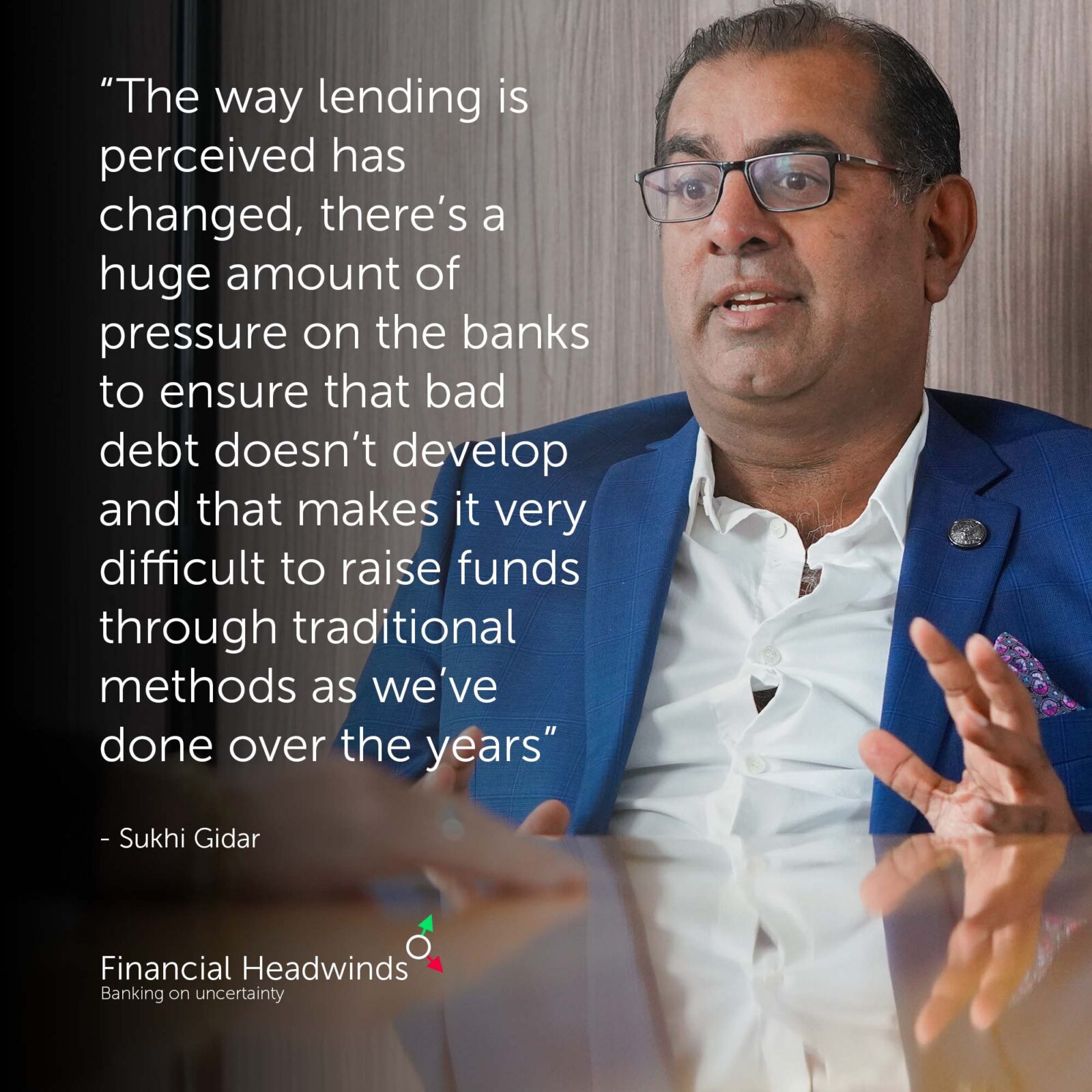
Another major consideration for all in the industry is what is coming down the line in terms of non-performing loans, defaults, insolvencies and how lenders will respond to it. “It’s very early days” on this front in the opinion of Ben Barbanel. The latest data on mortgages published by the Financial Conduct Authority (FCA) and the PRA indicates that the majority of borrowers continue to manage to make payments with 1.02% of outstanding mortgage balances in arrears.
That is far below the 3.6% seen in 2009. More broadly, The Insolvency Service reported that quarterly company insolvency numbers were at the highest level since Q2 2009 and saw the highest number of creditors’ voluntary liquidations (CVLs) since its records began in 1960.
Milan Kapadia, insolvency partner at RWK Goodman, observes that “commercial lenders are seeing increasing numbers of clients running into issues, while on the wholesale banking front, opportunities are few and far between and banks, like many individuals, are facing significant challenges as they work to maintain and develop a profitable business”.
Our contributors broadly agree that there has been a slight uptick in defaults, with Ben Barbanel acknowledging that this is “inevitable in a market like this”. Leo del Rosso agrees, citing the heightened pressure “in the residential sector where peoples’ incomes are a bit more stress tested with the cost of living, while on the commercial side, investors’ portfolios are coming under a bit more stress through higher mortgage repayments”.
The regulators are working closely with lenders encouraging them to collaborate with borrowers that are struggling to make payments, with political pressure also being felt in the run-up to a general election. Lenders are exploring options to defer payments or make extended repayment arrangements. Ben Barbanel says that “banks are holding off taking that action wherever possible” and that OakNorth’s “books continue to hold up well”.
The PRA’s primary objective as set out in its 2023/24 business plan is to “maintain and build on the safety and soundness of the banking and insurance sectors, and ensure continuing resilience”. They have prioritised building the amount of capital in the market and have confidence in these levels. Indeed, the Bank of England’s latest stress test of the UK banking system found that the banks remain resilient and able to support businesses and individuals. This test, which took place in July 2023, measured banks against an outlook that is markedly more severe than the current macroeconomic outlook, including interest rates of 6%, a hypothetical recession, a 30% drop in house prices and 8.5% unemployment. More broadly, Leo del Rosso explains that “banks have been stress testing deals quite severely when they’ve been entering into them for the last five or six years”, meaning that “a lot of that [experience] has been factored into the initial underwriting”.
All in all, our contributors were in agreement that lenders are sufficiently prepared, and deals are sufficiently stress tested to avoid a significant crisis on this front. Adam Bovingdon, head of property development at UTB, emphasises the importance of borrowers and lenders working together creatively, whether through the use of “incentives to borrowers, potentially the part-exchange of units in order to try and achieve an exit”, and other mechanisms to avoid a major spike in defaults.
However challenging the financial conditions get, entrepreneurs are liable to find a way to succeed, prosper and support progress. Ben Barbanel believes that they “will find a way in good times and adverse times”. These individuals can be found adopting a variety of alternative strategies to navigate the difficulties that arise through the lending cycle. Experience is, of course, advantageous and Adam Bovingdon emphasises the importance of “lending to those that have been through the cycle and really understand what some of the implications of these challenges and headwinds may be”.
Alongside these entrepreneurs, lenders who lend at all stages of a financial cycle are a key component of the financial ecosystem, aiding in the flow of funds through the economy, supporting businesses and facilitating development and progress in British infrastructure. Ben Barbanel reiterates that OakNorth “will continue to lend through the cycle”, albeit whilst exercising prudence. Similarly, UTB will “continue to work with new clients and new borrowers, as well as our existing portfolio”, according to Adam Bovingdon who expects the market to bounce back over the course of 2024.
The future of the banking industry: opportunities and pitfalls
There is little doubt that the headwinds and complexities facing the banking industry are making raising funds through traditional methods increasingly difficult.
Retail and corporate lenders alike are grappling with a challenging environment in which to increase revenue. While all our contributors expressed caution when it comes to lending in the current market, the lending rates and conditions at the high street banks are perceived as tighter and stricter. The banks that we spoke to have “remained open for business”, as Adam Bovingdon, head of property development at UTB, put it, while “taking into account what some of these implications may have on future schemes that we’re funding”.
One trend that some of our contributors perceive is a move on the part of institutional lenders away from the clearing banks and towards alternative lenders. Ben Barbanel, head of debt finance at OakNorth Bank, attributes this to these larger lenders “not wanting to maximise leverage or have aggressive lending structures”. For OakNorth, “there’s a few lenders on the real estate side that are fantastic, and we see them regularly and we have a lot of respect for them. And there’s a few of the debt funds on the corporate side that are great. We don’t really compete against the high street lenders, and we just don’t see them”.
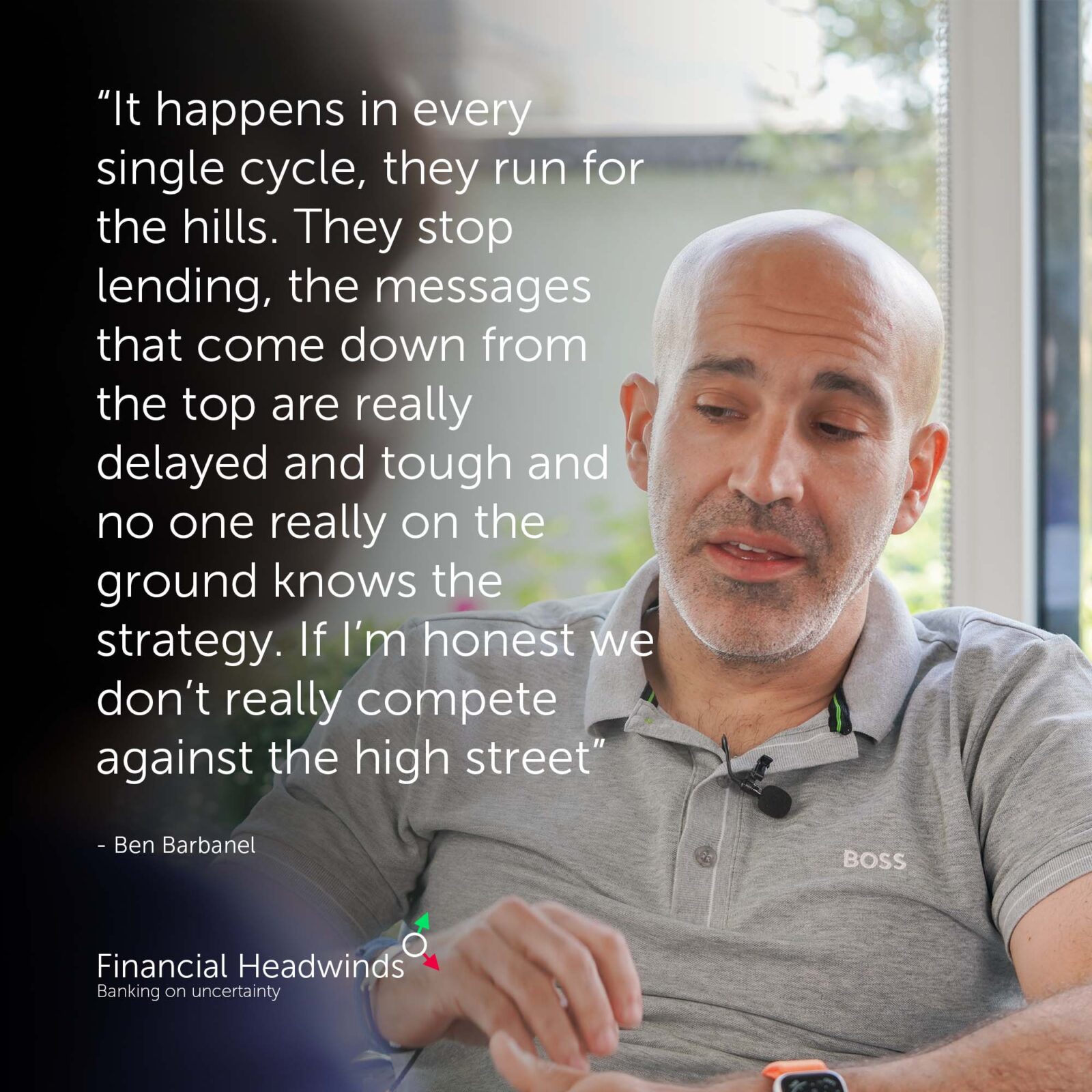
According to Ravi Gidar, chairman of Gold Care Homes, “the high street banks are looking to lend 50-55%”, a threshold which is prohibitively high for most new entrants. In contrast, Adam Bovingdon says that at UTB they “continue to fund developers with up to 65% loans to GDV” or gross development value. As banks look to boost their net interest margins (the difference between the amount of money generated by interest on loans with the amount a bank pays out in interest on deposits), they must work hard to entice both retail and corporate customers. Ben Barbanel explains that OakNorth “tweak [their] rates almost hourly or daily based on the lending pipeline”, balancing “having to pay higher rates because of where the base rate is” to maintain their net interest margin.
As the retail banks aim to increase their profits while remaining competitive, the Financial Times’ analysis of the corporate filings of the four biggest UK banks (NatWest, Lloyds, HSBC and Barclays) up to June 2023 showed that deposits had “fallen by close to £80 billion over the past year, as retail and corporate customers look for better interest rates, households grapple with higher costs and mortgage holders pay off loans early”.
In July the FCA placed significant pressure on the UK’s major banks through its 14-point action plan on cash savings, indicating that “firms offering the lowest savings rates will be required to justify… how those rates offer fair value, according to the Consumer Duty”. They signalled that “if [banks] are unable to do so, the FCA will take action”, and also emphasised a need to improve communications with customers on their options and report back on the effectiveness of these communications.

With regard to lending in this complex environment, as Sukhi Gidar, director at Gold Care Homes, expounds, “there’s a huge amount of pressure on the banks to ensure that bad debt doesn’t develop”. He adds that the high street banks “are super sensitive to the chance of anything going south in terms of their lending, so the criteria is absolutely bulletproof”. He also sees significant variation in lending appetite and approach depending on the sector in which a corporate borrower operates. In the experience of Ben Barbanel, “the messages that come down from the top [at the high street banks] are really delayed and tough and no-one on the ground really knows the strategy or what’s discussed in the board room”.
In the meantime, retail banks are facing a surge of competitors in the form of digital banks, which may not have branches but offer clients a more flexible and bespoke service, all available at the click of a button. Retail customers are becoming more open to alternative banking options, recognising the opportunities to be found through digital banks such as interest rates on deposits or fees for using a card abroad. Sudhir Sharma, UK regional head at State Bank of India, observes that while these digital banks may not have a physical presence, “they are catching up very fast in the personal segment”.
Meanwhile, corporate clients are seeing more and more value in broadening and diversifying their relationships within the industry. The ascent of the private capital industry will continue to push banks and creativity will be required to differentiate and provide value to corporate clients. Indeed, it would appear that there are a plethora of alternative lending options available and on the rise. Sukhi Gidar sees the alternate banks lending across the care home and hotel sectors, explaining that “their lending criteria is a lot softer”, and even if “the cost of borrowing is high, it is readily available”. He expects the high street banks to face an ever-greater challenge from “new entrants to the market, who will look to their regular clients and make funds available quicker so that deals can happen quicker”. While this may mean that the cost of borrowing goes up, he cites the important role they can play in “bringing liquidity back to the market”.


Concluding remarks
It is clear that in this sometimes taxing macroeconomic environment, access to capital remains tough and borrowers can struggle to source the funding they need. This applies as much to the first-time buyer looking to take their first step onto the property ladder as to the experienced developer working on a new project or the care home operator exploring options to expand their offering.
An increase in defaults remains likely and some of our contributors are bearish on the prospects for this financial cycle. However, the strict financial measures put in place by regulators and banks mean that the levels of defaults and insolvencies are not likely to spike or lead to a financial crisis in the near-term future. The government’s appetite to maintain the economy and the likelihood that the housing market will be a cornerstone of government policy in the coming years underpins the actions taken by players in the banking industry.
In spite of the challenges faced through an ongoing cost-of-living crisis and the variety of shocks that have reverberated through the UK and global economy in recent years, entrepreneurial lenders and borrowers alike are demonstrating creativity and finding ways to inject capital into the market. Ravi Gidar, chairman of Gold Care Homes, gives the example that “eventually in the care home market there will be no freeholds” and “everybody will be selling leaseback”. He believes that “traditional banks will move out”, noting that while “there is a lot of money in the market, that money is in funds and family offices”.
The continued emergence of a variety of challenger banks and alternative lenders poses a significant threat to the traditional high street lenders. The industry will inevitably continue to evolve, and competition will open up the options for financing. For now, it remains to be seen how this challenge to the status quo will impact the banking industry, but an increasing variety of diverse lenders and lending models opens up opportunities for entrepreneurs to thrive.

Financial Headwinds - Coming up next
We would like to thank those who have contributed to this report and welcome you to join the discussion via the activities we have planned over the coming months.
Sign up here for the latest reflections in our Financial Headwinds series, including discussions on how challenger banks are differentiating themselves from the high street bank model, what lessons have been learnt from the last financial crisis, and insolvency trends and predictions.
Sign up to receive event information and invites.
Read more from around RWK Goodman
View more articles related to Commercial, Corporate, Financial Services and Insolvency














